Ever since the pandemic, I’ve been steadily acquiring, and frequently killing, houseplants. You might remember that I wrote about houseplants here and here. At the risk of jinxing myself, I’m happy to report that I’m actually getting better at being a plant parent. [NOTE: I did, in fact, jinx myself. I made the fatal error of watering my string of pearls, which seemed like a good idea because their “windows” were closed and they were getting squishy, but however I watered it was the wrong way and now it is mad at me and clearly ailing. This is sincerely annoying. It’s given me a crisis of confidence. However, the post is fully written, and the rest of these plants aren’t dying–knock on wood–so I will proceed].
Here are some things that I’ve learned.
When I bought this lipstick plant at UPshining, the person who helped me advised me to resist watering until the leaves start to look wrinkled. This was excellent advice, and it’s led me to do a much better job of not murdering my succulents. Generally speaking, I’ve found that checking that the soil is super-dry is insufficient: now I wait until the soil feels super-dry and I notice that the texture of the leaves indicates that it’s thirsty, either because it’s starting to get some wrinkles or because the leaves bend when you do the “taco test” with plants like the ones below (hoya and string of turtles), applying a little bit of pressure to see if the leaves resist or if the fold inward.
My sister gifted me this cute little propagation station, and having it on my wall has helped motivate me to continually propagate cuttings.
Whether a cat has broken a branch off of something or I’ve intentionally trimmed an unwieldy plant, having the propagation station ready and waiting encourages me to propagate. Then, if a new baby is ready to go into her big-girl pot and the little tubes are empty, it looks sad, so I take a walk around the house to see what could use a little trim. I started out very reluctant to prune plants, but I’m finally more comfortable with it, and it absolutely makes my plants happier and healthier. When a plant is really struggling, plant people often advise that you should “chop and prop,” and it’s much less sad to do that if you know you may get better results with the next generation.
Speaking of big-girl pots, I have gradually eased away from mostly putting plants directly into pots, and these days I frequently use a purely functional clear plastic pot that I put into something more decorative. I like that you can get a better view of the moisture situation and the root growth, and it’s easier to repot when necessary. Also, I don’t repot when I buy new plants. I don’t know why I used to always think that I needed to repot a new plant right away, but it’s plenty of transition for the plant to move into the house, so now I wait.
Then, when I do repot, I am all about drainage. That means that I go for “chunky” soil, meaning that instead of just using potting soil, I might use cactus soil or mix potting soil with sand or perlite so that it drains easily. At this point, I usually have a few bags, so I can Google up the plant name + soil to look for suggestions. And when in doubt, I chunk it out. And then, I’m not going to put a plant directly into a pot unless it has multiple holes — one little hole in the middle is insufficient, so when I can, I’ll drill extras. Or just use it as a cachepot. Although if you’re looking for a cheap pot that’s pretty neutral with plenty of drainage, I like these recycled resin ones you see below.
So! One of my major problems with killing plants in the past was overwatering, and I’m (mostly, usually) conquering that. But meanwhile, if you think that means that none of my plants have died of thirst, you would be wrong. Some plants just get extremely crispy extremely quickly, and even if I would respond as soon as I noticed, I didn’t always notice immediately. And plants can only bounce back so many times. RIP my China doll and a few different varieties of acanthus. But, it looks like I’ve finally cracked the code!
These polka dot plants and this nerve plant all have self-watering cords that connect from the soil in their pots (little plastic nursery pots; I’m using this planter set as cachepots) to the tray that they’re sitting in. I add water directly to the tray so that they’re always in water, plus they like the humidity it creates. And it’s right next to my desk, so if I have stale drinking water, I just pour it into the tray to refill.
And that’s another new technique! I no longer water my plants straight from the tap. Sure, rainwater or distilled water are recommended, but I don’t have a rain barrel and I’m too cheap to purchase water. But it turns out that letting tap water sit out allows chlorine and other chemicals to dissipate. I already had this cute little water dispenser sitting out on a shelf, so I just started filling it. Then, when it’s time to water any plants, I fill my watering can from the spigot and maybe I’ll add some liquid fertilizer. Or I might bring the dispenser into the bathroom if the plants are soaking in the sink or the tub. When I’m done, I’ll refill the water dispenser and let it sit until my next plant-watering session.
One of the biggest shifts in my plant maintenance is that I basically “visit” with all of my plants a couple of times a week. Part of it is to water plants, but it’s also a little check-in where I walk around cooing at the plants like they are pets. I congratulate them on new baby leaves, I stick my finger into soil to see how dry it feels, and I look carefully for any changes (like these spikes on my baby rubber plant, which are how it flowers).
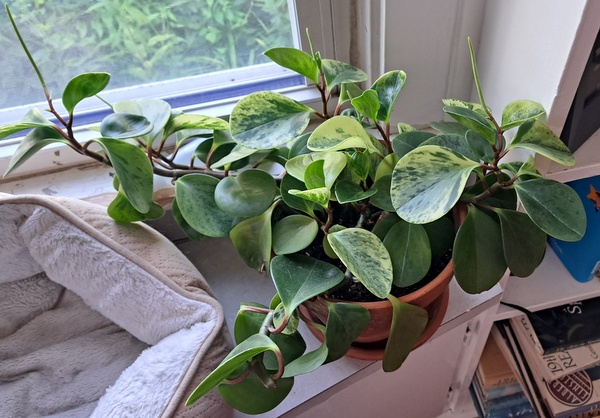
Then, if I notice a change, especially if it’s something that’s unexpected or sad-looking, I Google to find out what’s going on. For example, a month or so ago, I notice that some of the leaves of my pilea peperomioides (aka Chinese money plant) were turning red. It turns out that it’s basically a sunburn, and it indicates that the plant’s getting too much direct sun. The plant had been sitting in the same spot for a while, but the stronger springtime sun was too much for it. Now it’s enjoying a slightly shadier spot in the hallway.
Speaking of lighting, another thing I’ve been experimenting with is giving plants that typically get low light a chance to enjoy more sunshine. We’ve got a snake plant that’s been basically ignored in a corner, and it’s looked the same for years. But the thing is, even a plant that will tolerate low light still appreciates light. I moved it, and look! New baby leaves are unfurling!
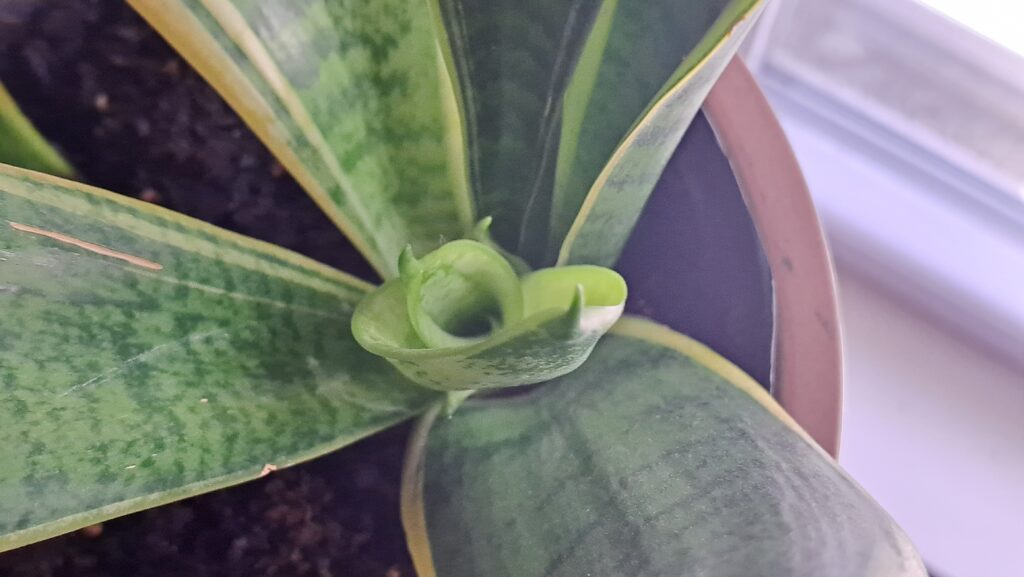
Another thing I might notice when I’m doing my rounds and saying hello to the plants is pests like fungus gnats, and then I’ve got a little homemade spray bottle of neem oil at the ready. I concoct my own by diluting pure neem oil in water with a smidgen of soap, which is much cheaper than buying the spray.
This set of shelves next to my desk makes me so, so happy. I have definitely learned to redirect some of my mama nurturing energy. Someone mentioned how many plants they have and I was like, “Jeez, that sounds like a lot,” and then I realized that I have 26 plants in this room, not counting the propagations. Granted, this is my plantiest room. And among them, 4 are plants I swapped for, 4 are plants I propagated myself, 3 are “old-timer” plants that I’ve had for at least five years, and 7 are plants that I rescued from dying-on-the-Lowe’s-clearance-rack. But it’s still a lot of plants. I love them all. And luckily, we won’t have to pay for college for any of them.

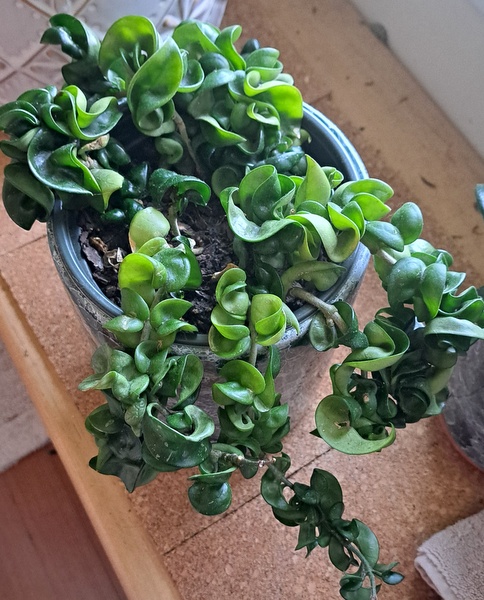
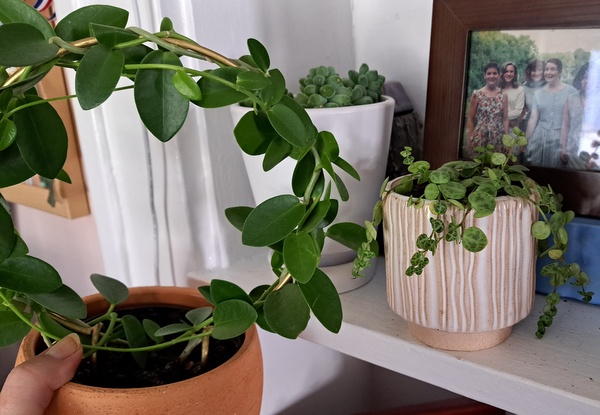
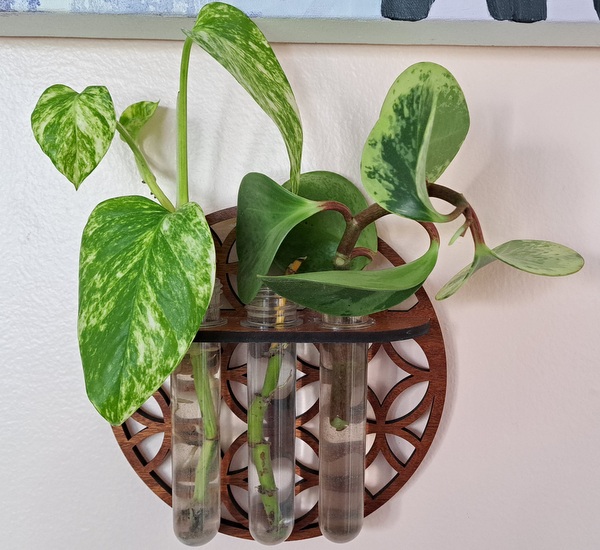
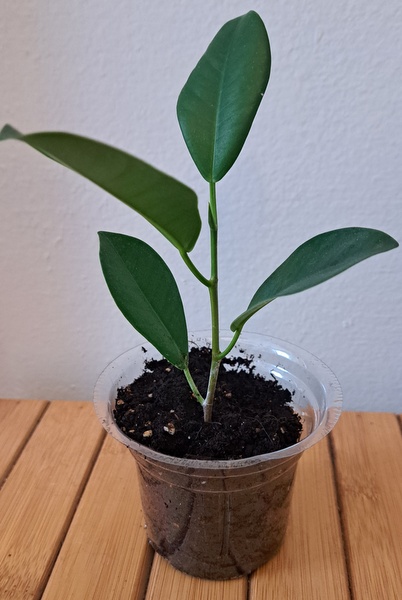
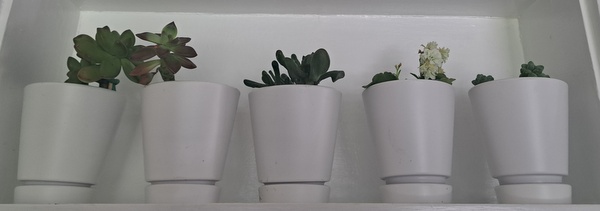
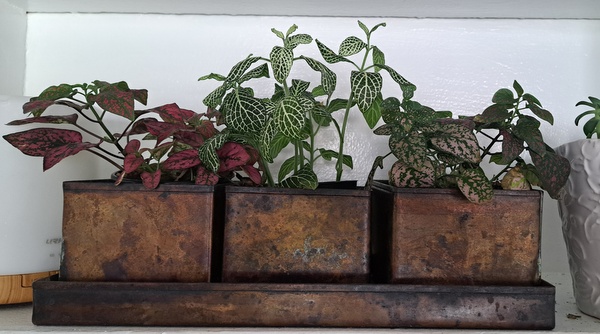
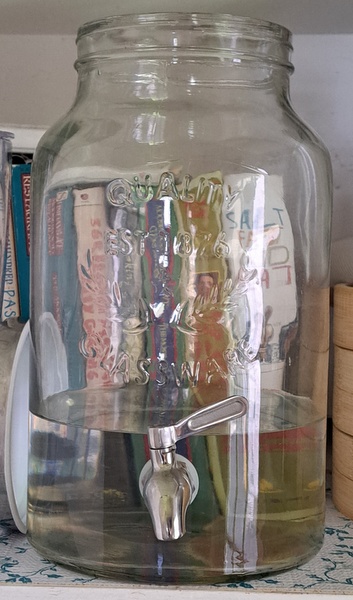
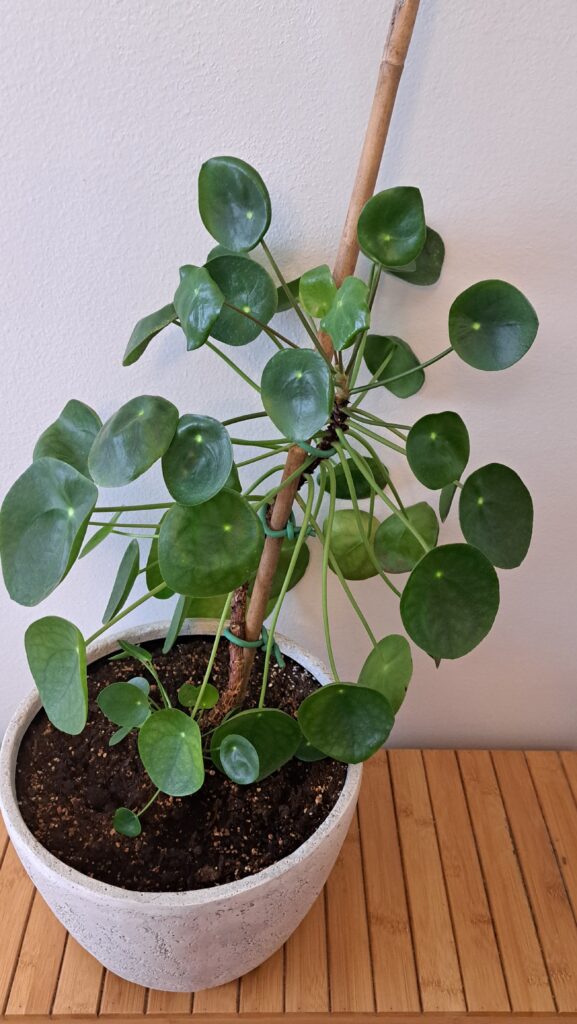
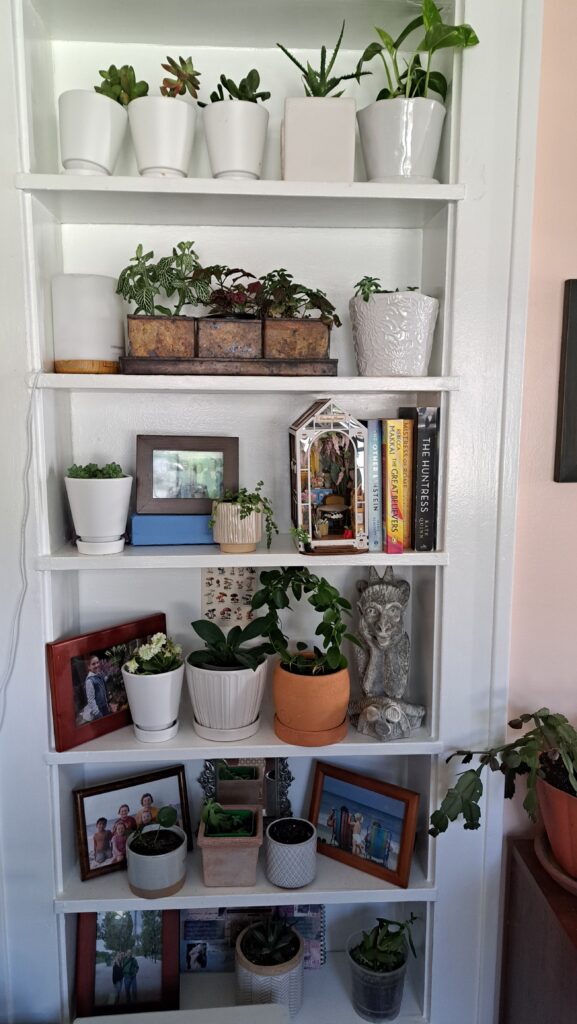
Nana in Savannah
Wow, they all look so healthy and lovely. What a great variety you have!